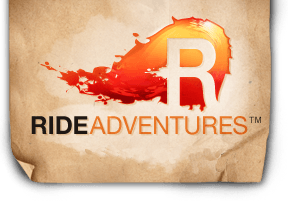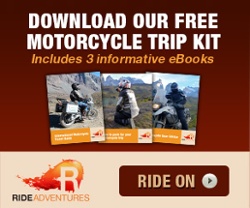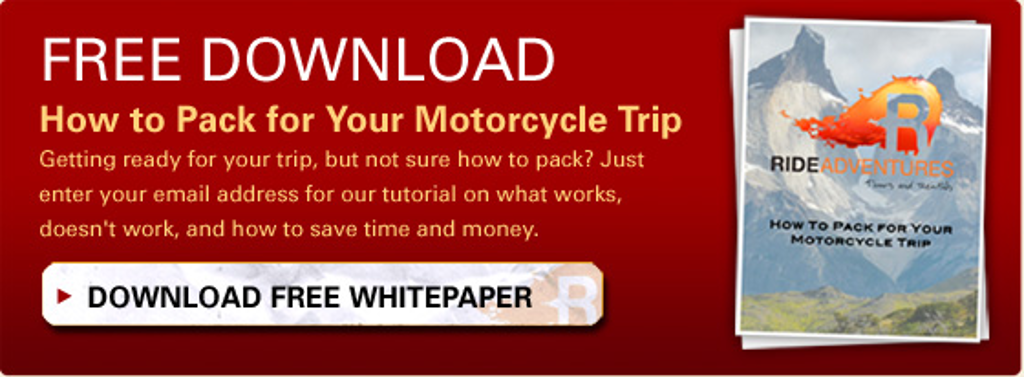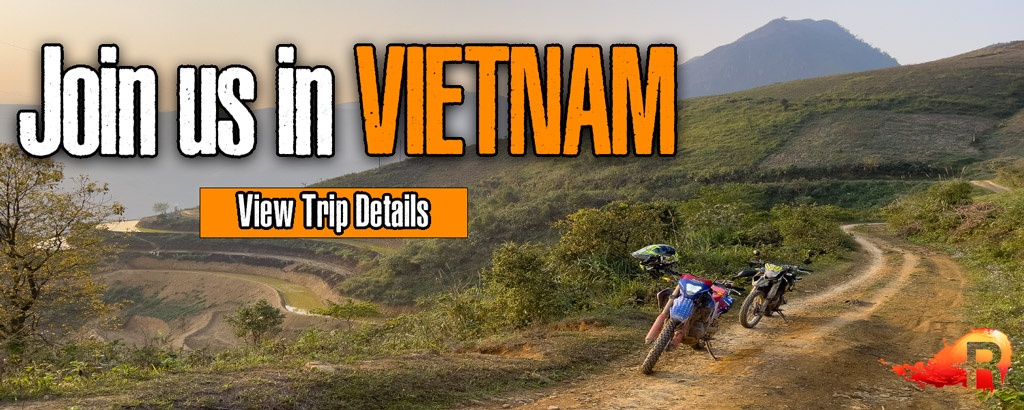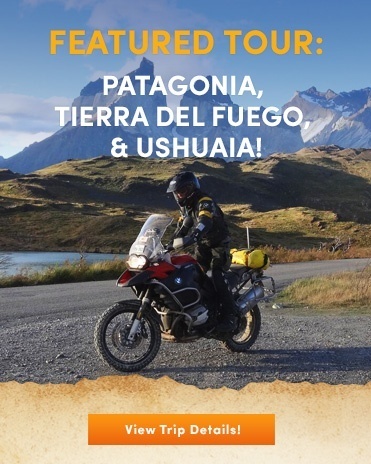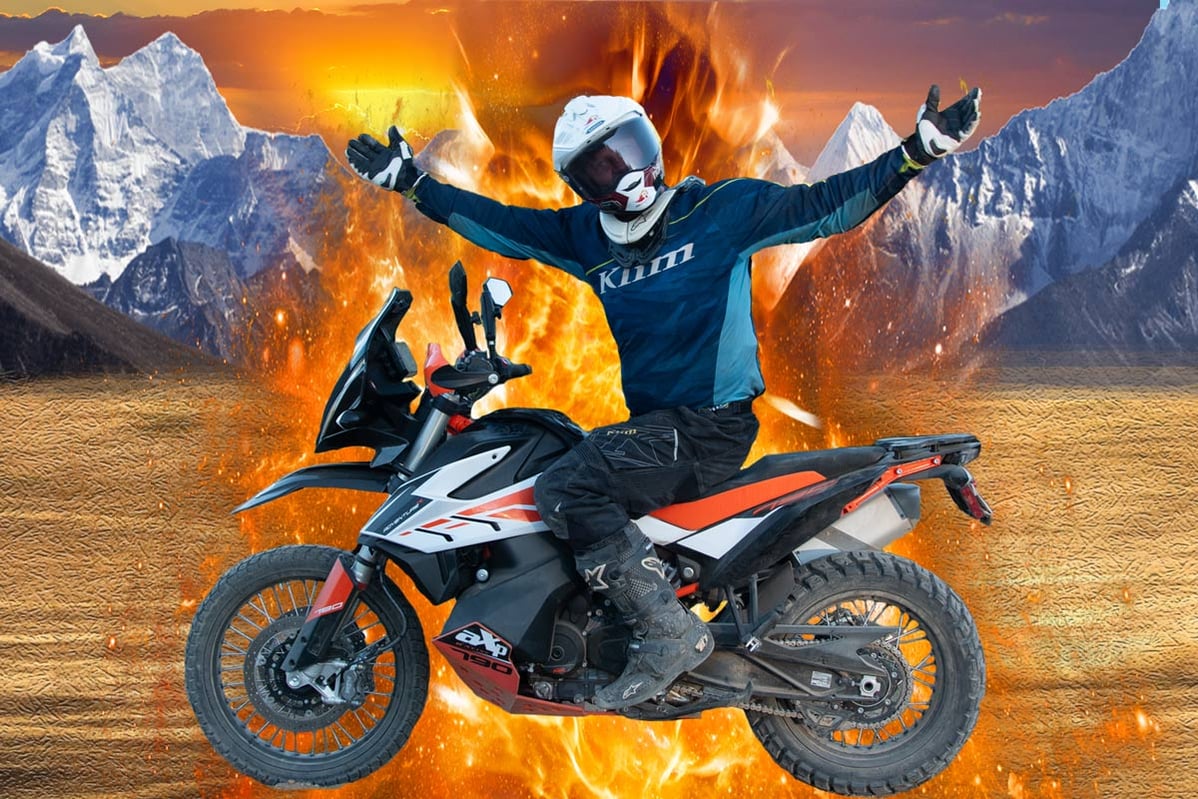 Disclosure: RIDE Adventures is a participant in the Amazon Services LLC Associates Program as well as other affiliate programs, designed to provide a means for us to earn fees by linking to Amazon and affiliated sites at no extra cost to you. Please see our Disclosure for more details.
Disclosure: RIDE Adventures is a participant in the Amazon Services LLC Associates Program as well as other affiliate programs, designed to provide a means for us to earn fees by linking to Amazon and affiliated sites at no extra cost to you. Please see our Disclosure for more details.
Tired of watching big adventure bikes travel the world from the sidelines? Ready to get out on an all-terrain adventure of your own? Here's how to get comfortable off-roading on a big bike the right way.
There's never been more motivation to get into offroad touring on a big adventure bike. By now we've all seen the videos: there's Toni Bou climbing vertical walls on an Africa Twin, Pol Tarrés out manhandling a big Tenere up a cliff, and Chris Birch literally flying through the air on a KTM 1290 Super Adventure, just to name a few.
The natural response of any warm-blooded motorcyclist is to run out and buy a big adventure bike, and who could blame you? The sound and fury of those big twins plowing through anything and everything is enough to make anyone crave big power and bigger knobbies.
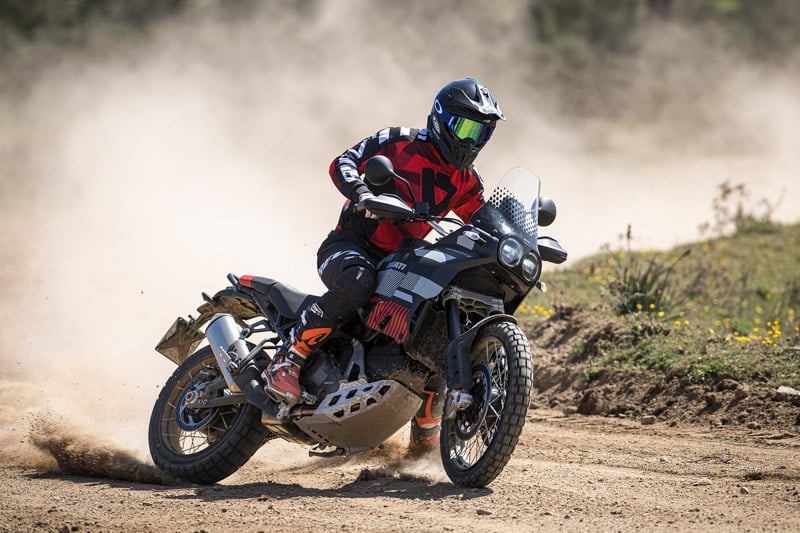
"Media hype makes a damn convincing argument for big bikes and bigger power."
Unfortunately, learning to ride offroad on any one of these bikes, from the comparatively mild 700cc Yamaha to the absolutely bonkers 160-horsepower KTM, is a great way to have a terrible first experience in the dirt.
Fear not, we'll get to big horsepower slides and wide-open hill climbs before long, but if you want to learn to tame one of these fire-breathing beauties, you're gonna want to start small. Here's why.
Big Bikes Won't Teach You the Fundamentals
Riding in the dirt is arguably the most fun you can have on two wheels. This is the most dynamic and grin-inducing form of motorcycling on the planet, and as an added bonus, you'll never see highway patrol writing speeding tickets on dirt roads.
When you're first getting started, however, off-road riding feels utterly foreign, unstable, and a little nerve-racking. Traction becomes a relative concept, and pretty much everything you've ever learned about clutch and throttle control, braking, and body position goes out the window.
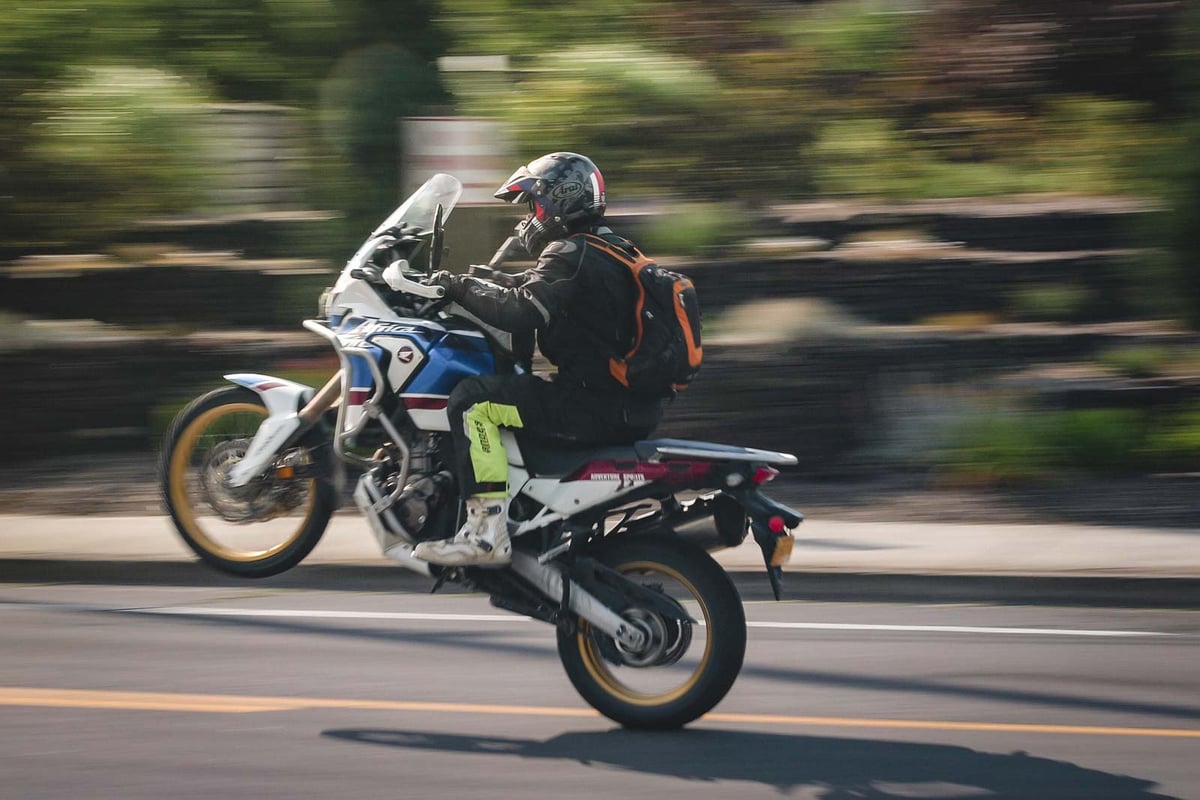
"Big adventure bikes are as fun as they look, but they're not a great platform to start learning off-road skills."
These are the core fundamentals you'll need to make riding in the dirt a treat rather than a chore, and the heavier and more powerful your motorcycle is, the harder they are to get a feel for when you're first starting out. We'll also note that dropping your motorcycle is a much more common occurrence once you leave paved roads, and picking up a 500+ pound machine several times in a single afternoon isn't anybody's idea of a good time.
The name of the game here is learning the finer points of motorcycle control, and the more power and weight you add to the equation, the more difficult that game becomes.
We'll also note that most big, modern bikes nowadays include complex traction control systems which are designed to "aid the rider" in controlling the bike as it slides around.
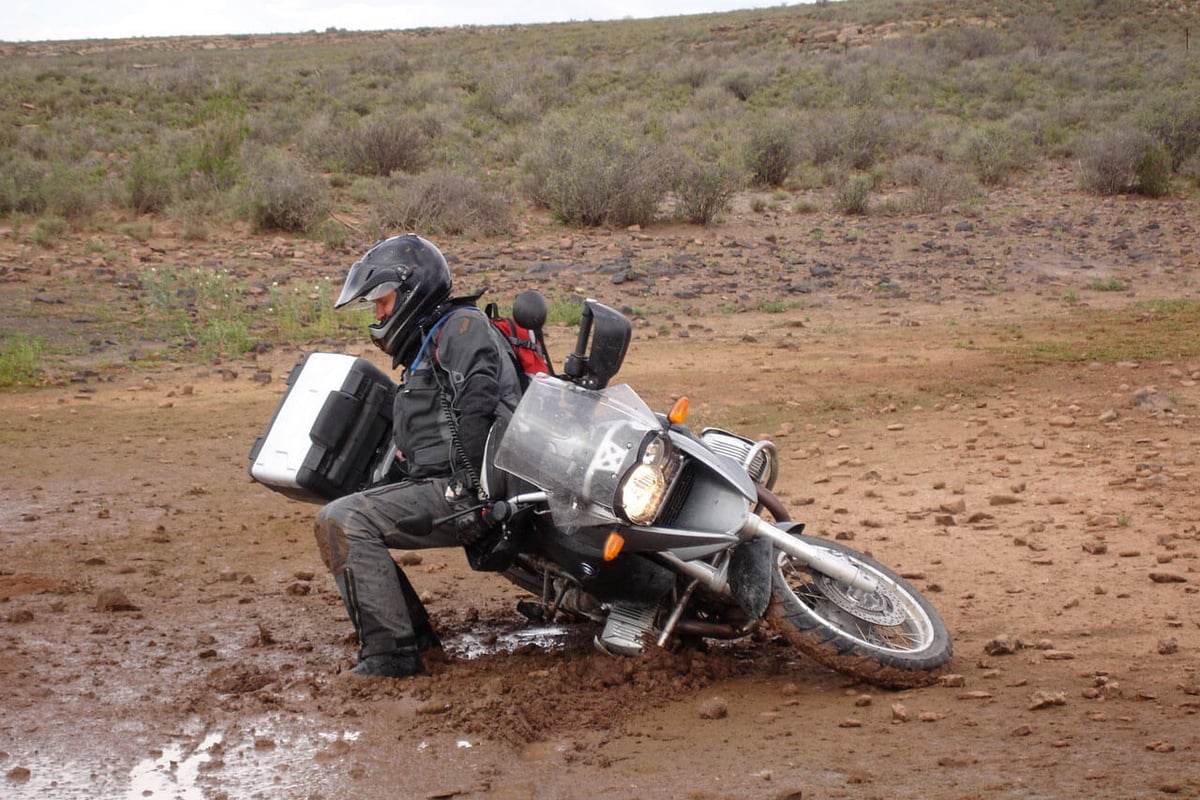
"It's about as fun as it looks, and his underwear probably match his knees. If you're first starting out on a big ADV, you've got plenty of this to look forward to."
In theory these systems help keep your average rider in control of the bike, but in practice they actually do more harm then good if learning to ride offroad is what you want.
That's because electronic aids add noise to the "circuit" between your throttle inputs and the back tire, preventing you from truly learning to control traction using fine motor skills.
Once you develop these skills, you can translate them to any motorcycle out there from a big BMW GSA to a Vespa scooter. So what's the best way to build these fundamentals? In our experience, a dual sport motorcycle is the only way to go.
Why Start On A Dual Sport?
If you want to go big, you need to start small. Less power, less weight, and less complexity are what we're after here. There are multiple reasons why this is hands-down the smartest way to learn to ride any bike off-road, so let's touch on a few of the big ones here.
Less Power + Less Weight = More Control
The cornerstone of this argument revolves around learning the fundamentals of controlling a motorcycle in a low-traction environment. How far can you safely lean a bike over on gravel? How fast should you take a muddy corner? How the hell do you keep a bike upright in deep sand?
Control can be a challenging proposition in the dirt, and the variables constantly change with the terrain. By starting on a lighter and less powerful machine, we're simplifying the process by removing two completely unnecessary variables (big power and extra weight) right out of the gate.
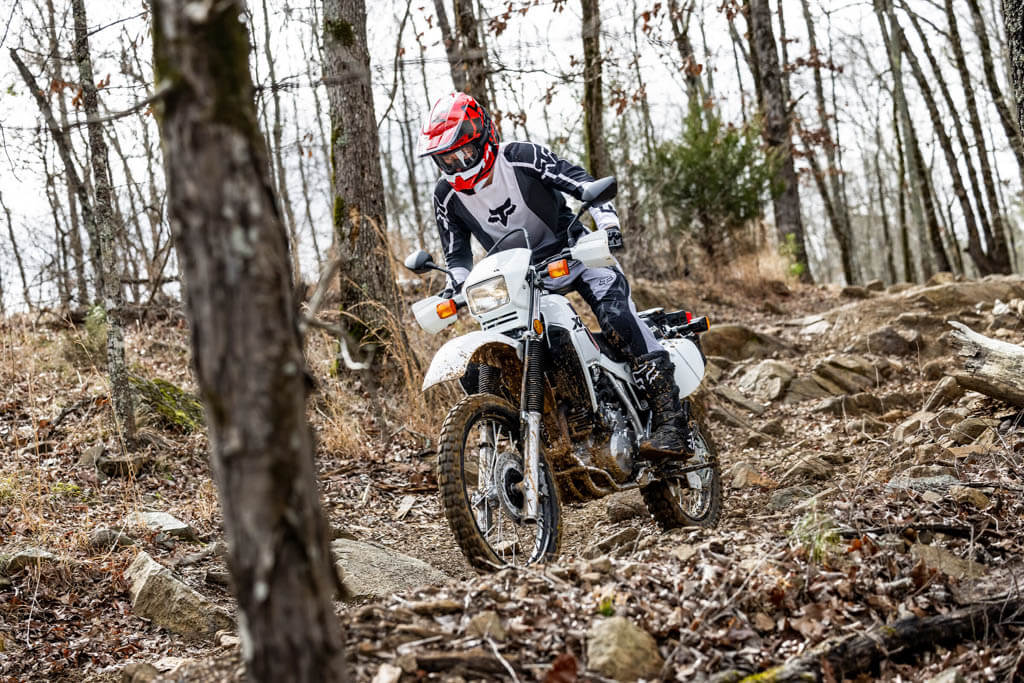
"Lighter bikes are easier to manage in the dirt, which translates to less stress and more fun for newer riders."
What makes these variables unnecessary? When it comes to power, you'll often hear enduro and motocross pros say something along the lines of "Anything over 20 horsepower in the dirt is just wheelspin." Truer words have never been spoken.
Extra power can come in handy on the highway, but once you're in the dirt, having enough ponies on tap to break the rear end loose at any time in any gear just gives you one more thing to manage.
On a less powerful bike, the only time you're likely to break traction with the throttle is when you do it on purpose, and that's exactly what you want.
As for weight, we would argue that the same rules apply. A heavy bike will be more stable and less prone to blowing around on the freeway, but for the lower speeds and more precise maneuvers required on dirt, any benefits gained from added weight are canceled out by the added momentum you have to manage in return.
Lighter bikes also make for more responsive bikes, requiring less body english to change direction and less powerful braking to shed excess speed.
They also tend to be much easier to balance at low speeds, especially when you're first starting out, and it's much easier to arrest a fall with a quick dab of the foot should things start to go sideways.
Dual Sports are Less Expensive to Learn On
Even the best off-road riders on the planet drop their bikes on a regular basis. It's just part of the process, and take it from us, dropping a smaller, less expensive dual sport hurts a lot less than a big, shiny new ADV bike (both for your checkbook and your body).
There are plenty of well-maintained, insanely reliable dual sport bikes out there you can buy for around $4,000 or less. That's a cash purchase for most folks, and what's even better is that the previous owner probably got those first couple of scratches and dings out of the way for you at no extra charge.
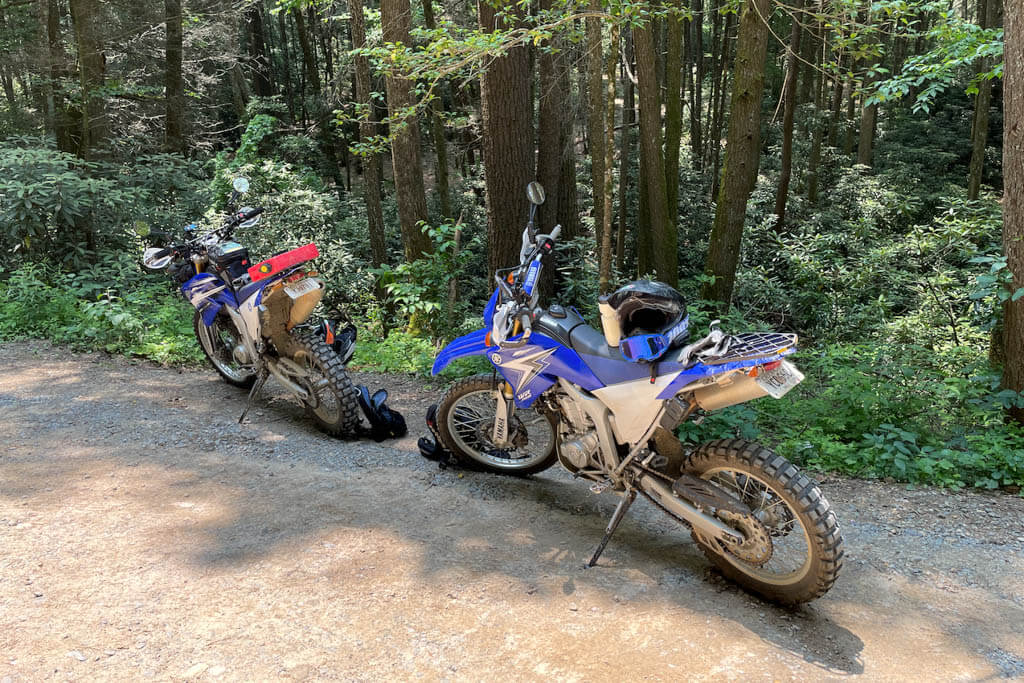
"We picked up both of these WR250Rs used last year for $4,000 each, and they've been insanely fun and problem free over several long trips."
Here are a few dirt-cheap and damn-fine candidates we'd recommend:
- Suzuki DRZ400
- Yamaha WR250R
- Kawasaki KLX 250
- Suzuki DR650
- Yamaha XT250
- Honda XR650L
- Kawasaki KLR650
- Honda CRF250L
Every single one of these bikes is dirt cheap, dead reliable, street legal, and capable enough to learn all the fundamentals on. The old-school 650cc singles can be a little heavier and more intimidating to start on, but even a porky Honda XR650L will make a much better platform for learning than a full-sized adventure bike.
Each of these bikes is also easy to maintain yourself, which is important because you'll want to learn some basic trailside repair skills if you haven't already. Changing oil, brakes, tires, etc. is easy to do for all the above, and you won't lose any sleep about scratching, bending, or braking anything in the process.
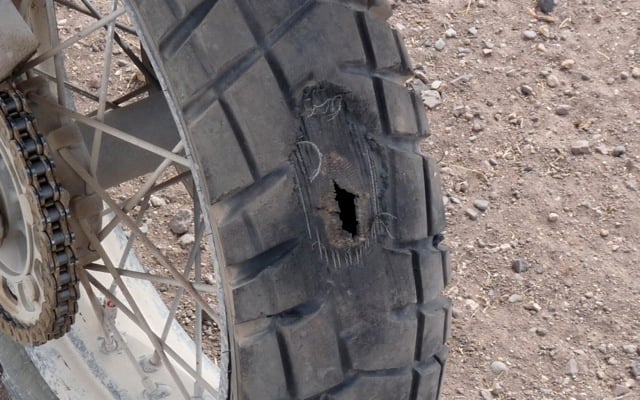
"Stuff happens out on the road. Spooning a tire off a smaller dual sport is infinitely easier than muscling one off a modern tubeless wheel."
We'll also note that while we've found most riders fall in love with their little dual sport and opt to keep it as a second off-road focused machine (even after upgrading to a big ADV), pretty much every bike on the list above can be resold again on the second-hand market for the same price you paid for it.
Less Complexity = Less Distraction
It's amazing how much faster we see riders learning when they don't have to worry about controlling a powerful engine or a heavy machine. You can practically see the lights switch on when someone climbs on a small-displacement dual sport for the first time and experiences the freedom of a truly simple machine.
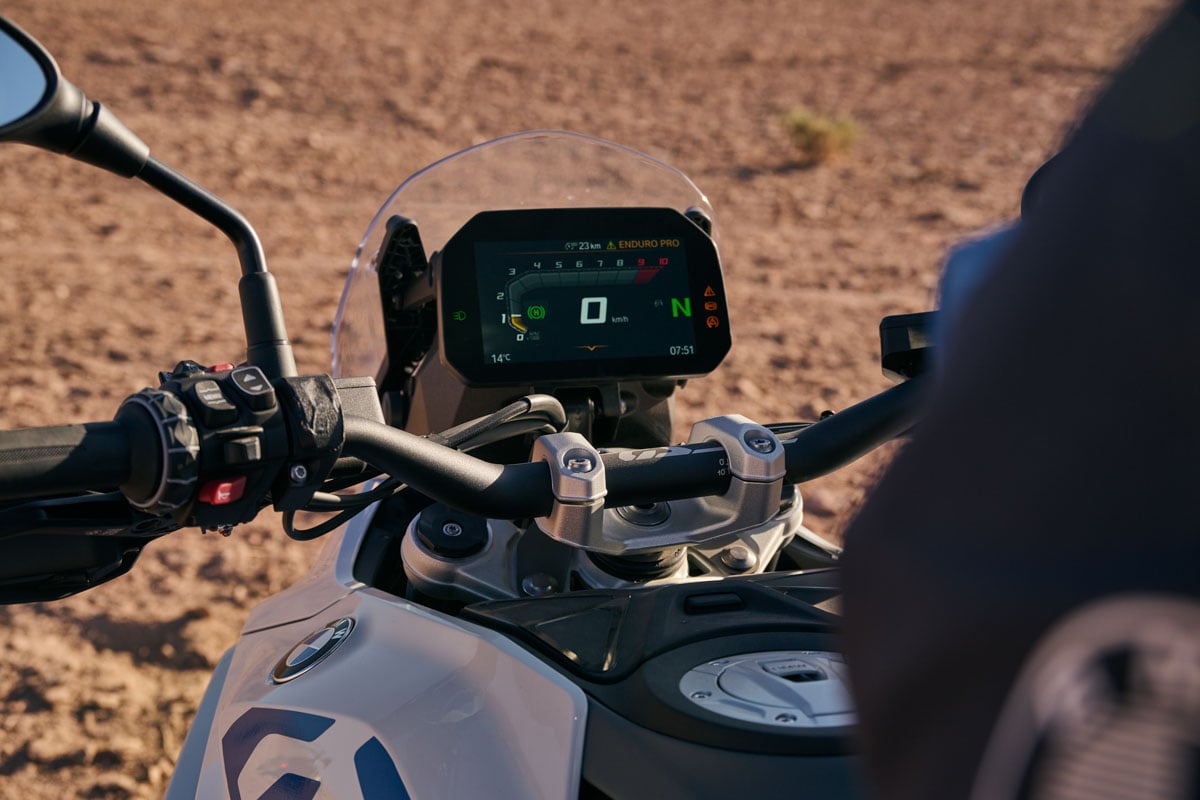
"Modern electronics are impressive, but also distracting and comparatively complex."
In our experience the same goes for complex electronics, which are also completely missing from each of the dual sport bikes recommended above. The only traction control to worry about is wrist control, and the only power mode to choose is the one the OEM gods have blessed you with.
This emphasis on less complexity also applies to every other common safety net found on modern big adventure bikes. Anti-lock brakes are a great example here, as ABS will not only negatively impact your stopping distance in the dirt, they'll also prevent you from learning how to apply maximum braking on low-traction surfaces.
You Can Still Adventure On A Dual Sport
While cruising at 90mph on the open freeway is definitely a benefit of larger ADVs, we've done dozens of multiday trips on little 250s as well. They may not be the most convenient or comfortable thing for long stretches of blacktop, but they'll get the job done just the same and are incredibly fun on twisty pavement to boot.
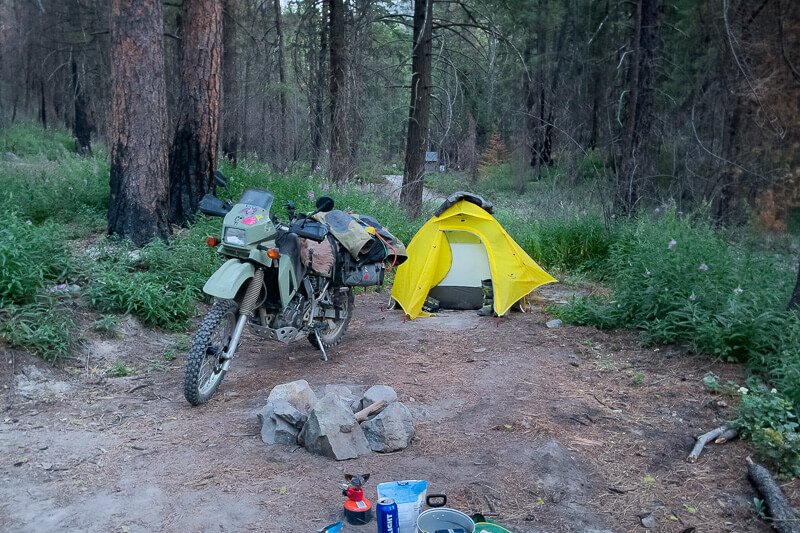
"A dual sport and a simple set of soft bags carried our full camping loadout on a recent run of the WABDR."
We'll also note that most small-displacement dual sports are geared for good torque across the rev range to make up for their comparatively smaller power output, which means they have no issue hauling a full complement of gear as well. We recently took our WR250R on a 500-mile all-terrain loop this past fall, and had no issues getting around with a full load of camping gear and supplies.
A decent set of soft luggage and a little wind protection will do wonders here, but the main point is a smaller bike will never be the limiting factor if you really want to get out and get a taste of adventure touring. Spend a few months getting to know the bike, taking your licks in the dirt, and building those fundamental skills, and you'll be much better equipped to handle a big adventure bike before you know it.
Stepping Up to the Big Leagues
Once you've put your seat time in on a dual sport and feel fairly competent riding in the dirt, you'll have an important question to answer: Do you still want to trade up to a big honkin' ADV, or has your dual sport experience changed your taste in two wheels?
We find riders who find their love of less-powerful, lighter machines will often upgrade to something like a more powerful enduro (KTM 690, Honda CRF450RL etc.) or a lighter middleweight ADV (like the Yamaha T7), and never look back at those 100+ horsepower beasts. Others will still want the added thrill and easy cruising of a larger engine, and opt for the BMW, KTM, Triumph, etc.
_compressed-1.jpg?width=1200&height=900&name=training%20group%20on%20side%20of%20road%20(Custom)_compressed-1.jpg)
"A training group at our Bend, OR facility stops on the side of the trail for a quick coaching session."
Regardless of where you find yourself after graduating from the dual sport school of hard knocks, we believe the single smartest thing you can either before or as you transition into a new bike is to invest in professional off-road training. Off-road classes like our Adventure Motorcycle Training course allow you to build on those home-grown beginner skills and become confident in your ability to control larger bikes.
Spending time with a few grizzled veterans in a hands-on setting will help you correct any self-taught bad habits you may have developed, and will also help to fill in the gaps on some of the more nuanced aspects of off-roading. These classes are also a great opportunity to try a big ADV before you buy it, as most of them include a wide variety of rental options in addition to a BYOB (bring your own bike) format.
Final Thoughts On Getting Into Adventure Bikes...
To clarify: We don't want to dissuade anyone from buying a big adventure bike. With the exception of a few of our off-road focused dual sport tours through places like Vietnam, we do 95%+ of our adventure riding on larger, multi-cylinder bikes, and we believe every motorcyclist can and should experience traveling this way.
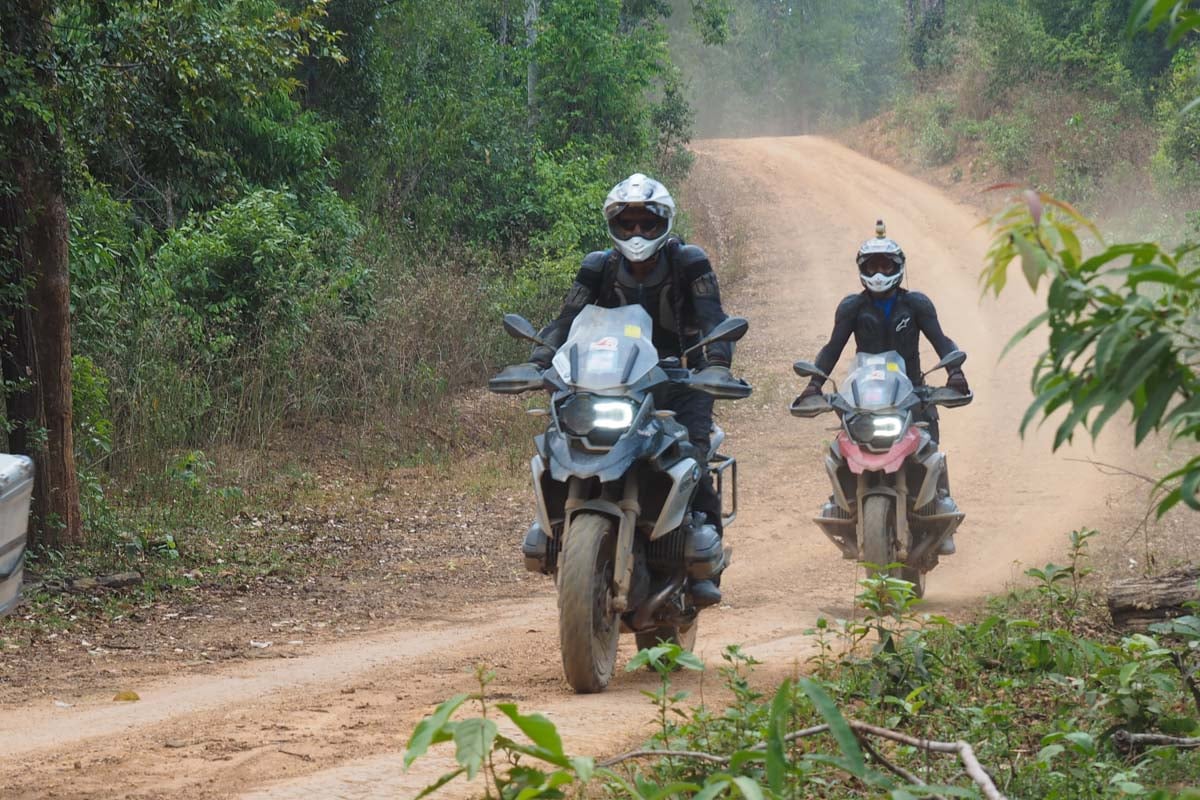
"Touring on big bikes through Thailand: There's plenty of wide open dirt here to let the big dog eat."
What we don't want, however, is for anyone's first taste of off-roading to be spoiled by biting off more than they can chew. Big ADV's are more fun, more capable, and more versatile than ever, but they can also be a bear in more technical terrain, which is why a little planning, practicing, and preparing on a dual sport is the smartest move you can make.
We're confident that with a little seat time on a smaller bike and a day or two of professional instruction, any rider will be well-equipped to explore the world on two wheels. We've also never heard anyone complain about adding another bike to their garage, so what have you got to lose?
→Read More: 5 Rugged Motorcycle Backpacks for ADV Riders and Best ADV Motorcycle Tires in 2023.
